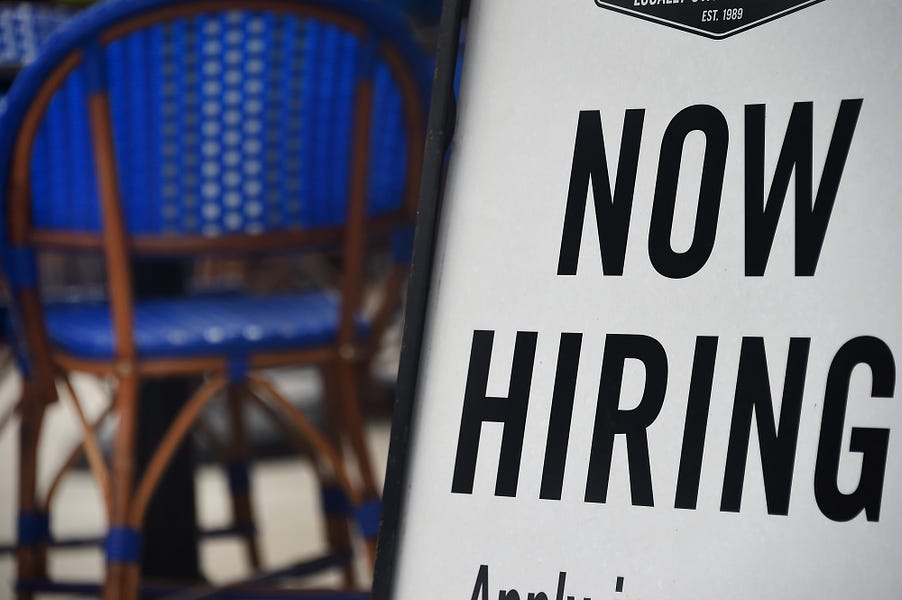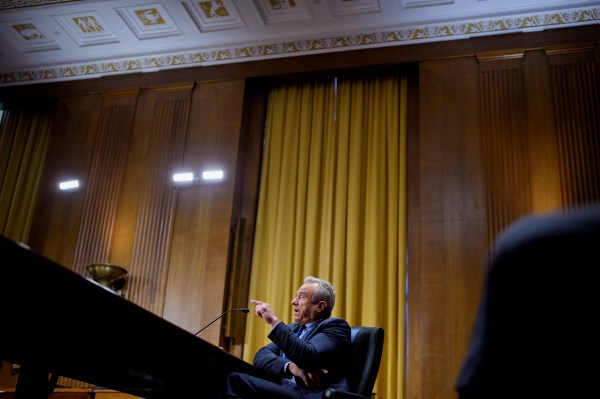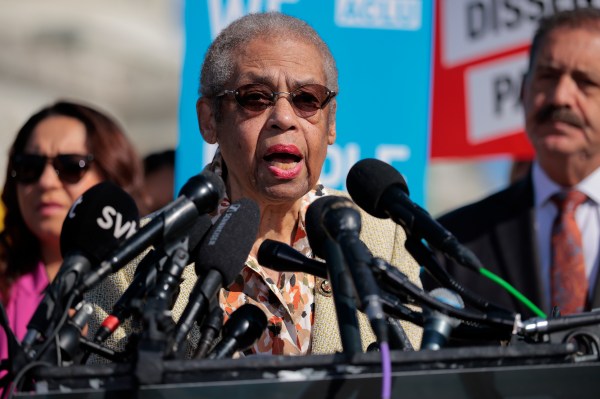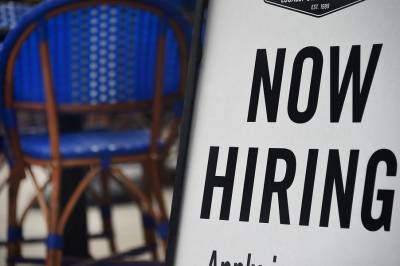WATERVILLE, Ohio—On a typical pre-pandemic Monday morning, Dale’s Diner would be buzzing. Just down from “Hall of Framers” and next to the local hardware store at the heart of this two-block downtown, Dale’s is a much younger sibling to Dale’s Bar & Grill, founded in 1926, in nearby Maumee. Still, the diner has become a community institution in the 10 years it’s been around. The local historical society meets here. The high school football team often comes for a big meal before games. Small groups of the semi-retired have standing breakfast dates and, according to owner Liz Anderson, Dale’s has become popular with widows and widowers who park at the counter seeking the nourishment of companionship as much as food.
On this Monday, however, one day after Easter, Dale’s is empty other than the couple who owns it and a journalist curious about why they announced its closing two days earlier. As we chat, a steady stream of would-be customers who hadn’t heard the news pause to read the announcement on green paper posted on the front door and windows facing the street, each visitor met with an apologetic shoulder shrug from Liz. Over the past year, Dale’s struggled through the pandemic—closing completely for two months before Ohio allowed for limited-capacity indoor dining in late May—shedding about 25 percent of its overall revenue, a loss that left it profitless even with the help of two cash infusions from the Paycheck Protection Program. But just as things were looking up, with an increasingly vaccinated public leading to Saturday morning lines reminiscent of pre-pandemic times, it became clear to Liz Anderson and her husband, Bill, that they couldn’t keep their diner open. And if the PPP helped them endure the pandemic, they believe it is another government program that will keep them from surviving the recovery.
Unemployment benefits—extended and elevated throughout the pandemic—are keeping would-be applicants away. The $1.9 trillion COVD relief plan passed by Congress extended the $300 weekly federal payments to unemployed workers through September 2021. The calculation is simple. Many low and unskilled workers can make as much money not working as they could with a job—sometimes more. So, they stay home.
“I’ve been in business for 33 years—10 years here, 33 years in Maumee—this is the absolute worst it’s ever been,” says Bill Anderson. It’s primarily back-of-the-house employees he needs—dishwashers, managers, cooks. “Usually, we’ll put ads in in different locations to get people and we’ll get anywhere from six to 12 applications in the first week or whatever and we’ll get to take our pick—we’ll get to pick the best of that bunch. …Within the last couple of months, we don’t even get a call—we don’t get anything.”
There are likely many reasons for this. Some workers with vulnerabilities are reluctant to put themselves at risk by committing to a job that has them mingling with staff and customers who might be carrying the virus. Others are caring for friends or relatives who are sick or have quit jobs to watch kids home from school. And still others, including those with restaurant experience, may have taken jobs in other sectors.
But the Andersons—and the dozen small and medium business owners we spoke to for this report—say generous unemployment is the primary problem. A line cook at Dale’s Diner starts at $11 per hour, up $2 per hour over what it was before the pandemic, according to Bill Anderson. That’s $440 per week or $1,760 per month—roughly $21,000 per year, not including overtime and bonuses.
But pandemic-driven unemployment often pays more—sometimes far more. In Ohio, according to data from the Ohio Department of Jobs and Family Services, the state provided weekly unemployment benefits that averaged nearly $340. Add to that the unemployment supplements from the federal government—which have ranged between $300 and $600 per week, depending on which COVID relief law funded them—and you have some workers paid between $640 and $940 per week to stay home, between $33,000 and almost $50,000 on an annualized basis..
At the beginning of the pandemic, these enhanced unemployment payments made some sense. A primary objective as the virus spread was to keep workers from going to a job where they could become infected or infect others. So, getting employees to stay home was the point—or one of them. Now, however, with vaccinations ramping up quickly and more Americans comfortable returning to pre-pandemic activities, these same workers are needed to get the economy moving and to keep businesses open. But with the extension of a policy designed to keep workers home, it’s not surprising that many of them are doing just that.
“We wanted people to stay on unemployment rolls and stay home,” says Michael Strain, director of economic policy studies and Arthur F. Burns scholar in political economy at the American Enterprise Institute. “But why we would want to—with the pandemic receding, vaccinations increasing, the economy opening—do the same thing?”
The Andersons have had to ask more of their current staff. More hours, more flexibility, more patience. But they lived in such fear of an employee quitting that they were reluctant to ask them even to do routine jobs. “You tiptoe around,” says Liz. “You say: ‘Can you clean this … please?’ You’re very cautious.” They preemptively offered financial rewards to some of their key employees, including a $1,500 loyalty bonus to their kitchen manager. It didn’t work. “The last straw,” says Liz, “our kitchen manager just walked. When she walked, I said—‘We just can’t do this anymore.’ Our life was really being negatively affected by this.”
“I gave her a little extra and she walked three days later,” says Bill. “I gave her $1,500,” he adds, incredulously.
These staffing challenges aren’t unique to Dale’s Diner. Walk two blocks up Anthony Wayne Trail and you’ll come to Chowders N’ Moor, now closed Sundays because of the inability to hire more staff. One town over, a restaurant has been offering signing bonuses of $1,000 to new hires who stay for six months. Another local restaurant has been closing two hours early—at 8 p.m.—to avoid overworking its staff, and a nearby chain shut unexpectedly one day last week because several back-of-the-house employees didn’t show up for work.
A 14-hour drive south to Florida’s panhandle—a drive countless Ohioans make every spring and summer—an expansive beachfront restaurant called Juana’s Pagodas sits on Santa Rosa Island, facing the Santa Rosa Inlet—roughly halfway between Destin and Pensacola. It’s the kind of place where you order a massive Sailors’ Omelet in the morning or a Pagoda fish sandwich (w/Mahi) for lunch and return later in the afternoon to get chicken tenders, while the kids take a break from the sun and the adults drink a cold beer or three. But if you go to Juana’s this week, you might find a wait of more than two hours—on a weeknight. “Last night, we were literally on a two-hour and 20 minute wait,” says owner Kevin Rudzki, describing his crowd on a recent Wednesday. The restaurant has two kitchens, but Rudzki has only enough staff to keep one of them open.
Spring break kicks off a busy tourist season on the panhandle that lasts through the summer. “We would normally spend February, March, April slowly staffing up—50 or 60 employees to about 120, then back down again when kids would leave for school in the fall,” Rudzki explains. “But we’re not even seeing applications, we’re not even seeing people trying, except ones that are playing the game of filling out the paperwork, so that they can say they tried,” in order to qualify for unemployment.
“Normally, I have people lined up to work. I have never advertised for a job—ever. People just show up,” he says. “My competitors are running ads on radio stations, Facebook, etcetera—the same thing. There’s no one.”
Rudzki says his restaurant is feeling the effects of the shortage beyond back-of-the-house employees. A local brewery has been short drivers to distribute its beer. A private security firm had promised to send two security guards to help cover at least the busy weekend nights—Juana’s typically employs six to eight security staff. But a few days after they struck their agreement, a representative from the firm called to say he couldn’t find anyone to hire out. “We’re operating on the basis of—‘Hey everyone, be nice to each other.’”
Paul Ruiz, owner of Where Y’at Seafood, just across the inlet, has faced the same challenges and says it’s something virtually every restaurant in the area is facing. After four years staying open six days each week, he reluctantly decided to close on Tuesdays to give his staff a break. His ads didn’t yield much in the way of applicants, but they generated plenty of sympathy. “I put a big thing out on Facebook and four or five businesses said to us, ‘We’re having the same problems.’” Earlier this month, Ruiz and his restaurant were featured in an in-depth report about the hiring challenges in the Pensacola News-Journal, and that story generated more interest than the ads he’d run. “That article helped me a lot,” he says. “It’s really hard to find a good cook—I could use another cook or two, my sons are managing but they’re cooking, too. They’re doing more cooking than managing and I need them to do the opposite.”
Like the business owners in Ohio, Ruiz and Rudzki say the generous government benefits are the primary impediments to hiring. “You can’t incentivize people not to work,” says Ruiz, a longtime Air Force veteran. “You need to have incentives to get people to work, not to stay home. You’ve got the hard workers who want to have a job, but the others need that motivation.”
“The government jumped in and helped in a crisis—it was the right thing to do at the right time,” says Rudzki. “But now, let’s admit there’s a problem and let’s fix it.”
One overriding concern: One part of the “fix” is five months away. That’s when the federal unemployment supplement expires. Several of the business owners we interviewed volunteered the exact date—September 6—without prompting and told us their hiring strategies are built on more labor availability then.
If these employers draw a direct connection between government support and their hiring challenges, the data are suggestive but not dispositive. N. Gregory Mankiw, professor of economics at Harvard University and chairman of the White House Council of Economic Advisers (CEA) under George W. Bush, says that while the conventional view of the current labor market suggests there is still a lot of slack, there are some counterindicators. The job openings rate (4.9) is higher than at any point in the last two decades, a data point “consistent with the stories you have been hearing and suggests a tight labor market.” The “quit rate” points in the same direction. “It is hard to say whether that apparent inconsistency (between employment, which is still well below the peak, and openings/quits) is due to policy, such as excessively generous UI,” says Mankiw. “That is a plausible hypothesis, but still unproven.”
Jason Furman, also a professor of economics at Harvard and the former chairman of the CEA under Barack Obama, says while labor shortages do not yet show up in the data, it’s likely that the government programs are slowing hiring. “The usual sign of an unusual degree of mismatch between workers and jobs is rising wages in the sectors with labor shortages that draw new workers in. So far we do not see those in the data (in fact wages have grown more slowly in the leisure and hospitality industry than in the economy as a whole), but we also do not have particularly good data for March and have no data for April so I would not rule out labor shortages,” Furman tells The Dispatch.
“All of that said, I think the $300 a week supplement for unemployment insurance, relaxed eligibility for unemployment insurance, and 100 percent federal subsidy for COBRA is going to hinder the labor market recovery at some point if it has not already,” he added. “More than half of workers will get more from being unemployed than they would be from being employed. Many of those workers will still choose to get jobs for the security it affords but definitely there is a heavy thumb on the scale of staying waiting until September to take a job. No one has ever studied this scale of benefits as a pandemic is ending. Congress should have tapered the benefits so they phased down to $100 a week over the summer (especially since the same unemployed workers are also getting checks so could maintain their consumption).”
For Dan Sinykin, who runs Monterey Mills, a textile producer with operations in Wisconsin and North Carolina, the influence of the government support was clear and direct. Although he raised his wages 30 percent overall during the worker shortage, he’s been unable to return his operations to fully staffed. And his labor flow has closely tracked with the federal government’s boost to benefits. “We definitely saw a resurgence when the second stimulus check was cut,” he says. “I think we lost 19 employees that week… We definitely saw more employees not return to work when [stimulus checks and unemployment supplements] were distributed.”
Rep. Mike Gallagher, Republican from northeast Wisconsin, says that while the problems aren’t new, they’re becoming more urgent. “I can tell you this - the single most consistent thing I have heard from Wisconsin businesses of any size—small, medium, large—in any industry—ag, manufacturing, tech—for my entire five years in politics is this: Our biggest problem is finding workers. We cannot find workers with the basic skills, who can pass a drug test, and who are willing to show up to work.”
Rep. Bob Latta represents the district in northwest Ohio that includes Waterville. He’s worried that more businesses will go the route of Dale’s Diner before the situation gets better.
“What happens in September? Are the Democrats going to push it even farther and extend it? The question becomes—how do these small businesses survive?”
The Andersons hope that the closure of Dale’s Diner is just temporary. But the simple reality of the moment may not allow them to reopen. “When you can’t get the right amount of people to work at a business,” says Bill, “you can’t have a business.”







Please note that we at The Dispatch hold ourselves, our work, and our commenters to a higher standard than other places on the internet. We welcome comments that foster genuine debate or discussion—including comments critical of us or our work—but responses that include ad hominem attacks on fellow Dispatch members or are intended to stoke fear and anger may be moderated.
With your membership, you only have the ability to comment on The Morning Dispatch articles. Consider upgrading to join the conversation everywhere.